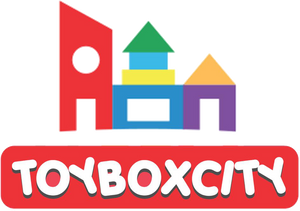How Hand Hygiene Helps Prevent Illness in Kids
Good hand hygiene is one of the simplest yet most powerful tools to protect children from infections. Kids are naturally curious, often touching surfaces, toys, and even their faces without realizing how germs spread. Teaching and encouraging proper handwashing habits can significantly reduce the risk of illnesses such as colds, flu, and stomach bugs.
Why Hand Hygiene Matters for Children
Children’s immune systems are still developing, making them more vulnerable to infections. Proper hand hygiene acts as a first line of defense against harmful germs.
-
Reduces the spread of bacteria and viruses that cause common illnesses
-
Protects children with weaker immune systems from serious complications
-
Helps prevent outbreaks in schools and daycare centers
-
Encourages lifelong healthy habits
By instilling these practices early, kids learn responsibility for their own health and the well-being of others. This small daily action can have a big impact on community health.
Common Illnesses Prevented by Handwashing
Handwashing is not just about cleanliness—it directly prevents the spread of specific diseases. Children often contract infections through contaminated hands after touching shared objects.
-
Respiratory infections like colds and influenza
-
Gastrointestinal illnesses such as diarrhea and norovirus
-
Eye infections like conjunctivitis (pink eye)
-
Skin infections caused by bacteria
-
Parasitic infections from contaminated soil or food
When children wash their hands regularly, they break the chain of transmission. This reduces school absences and keeps families healthier overall.
The Right Way to Wash Hands
Not all handwashing is equally effective. Teaching kids the correct technique ensures germs are removed thoroughly.
-
Wet hands with clean, running water
-
Apply soap and lather well, covering all surfaces
-
Scrub for at least 20 seconds (singing “Happy Birthday” twice helps)
-
Rinse under running water
-
Dry with a clean towel or air dryer
Practicing these steps consistently makes handwashing a reliable shield against illness. Parents and teachers can reinforce the habit by modeling it themselves.
When Kids Should Wash Their Hands
Timing is just as important as technique. Knowing the key moments to wash hands helps children stay protected throughout the day.
-
Before eating or handling food
-
After using the toilet
-
After coughing, sneezing, or blowing their nose
-
After playing outside or with pets
-
After touching shared surfaces like toys or doorknobs
By linking handwashing to daily routines, kids are more likely to remember and practice it without reminders. This consistency is what makes hygiene habits stick.
Hand Sanitizers vs. Soap and Water
Sometimes soap and water aren’t available, and hand sanitizers can be a useful alternative. However, they are not always a complete substitute.
-
Effective against many germs when used properly
-
Convenient for travel, school, or outdoor activities
-
Should contain at least 60% alcohol for best results
-
Less effective on visibly dirty or greasy hands
-
Not a replacement for regular soap and water washing
Parents should teach children that sanitizers are helpful but not foolproof. Soap and water remain the gold standard for thorough cleaning.
Role of Parents and Teachers in Hand Hygiene
Children learn best by example. Adults play a crucial role in reinforcing the importance of hand hygiene.
-
Demonstrate proper handwashing regularly
-
Provide easy access to soap, water, and towels
-
Encourage handwashing through fun songs or games
-
Remind children at key times, like before meals
-
Praise and reward consistent hygiene habits
When caregivers and educators prioritize hygiene, children are more likely to adopt it as a natural part of their daily lives.
Making Handwashing Fun for Kids
Kids are more likely to follow hygiene routines when they are enjoyable. Turning handwashing into a playful activity helps build lasting habits.
-
Use colorful soaps or foaming dispensers
-
Teach songs or rhymes to time the washing
-
Create sticker charts or small rewards for consistency
-
Incorporate storytelling about “germ monsters” being washed away
-
Encourage group participation in schools or daycare
By making hygiene engaging, children see it as a fun ritual rather than a chore. This positive association increases compliance.
Long-Term Benefits of Good Hand Hygiene
The impact of hand hygiene goes beyond preventing immediate illness. It shapes healthier futures for children and communities.
-
Reduces healthcare costs by lowering infection rates
-
Improves school attendance and learning outcomes
-
Builds resilience against seasonal outbreaks
-
Encourages responsibility for personal and public health
-
Promotes habits that continue into adulthood
Ultimately, teaching children proper hand hygiene is an investment in lifelong wellness. It empowers them to take control of their health and contribute to a healthier society.


